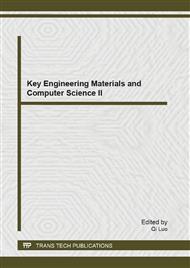[1]
T.L. Friedman: The World is flat: A Brief History of the Twenty-first Century (Farrar, Straus and Giroux, New York 2006).
Google Scholar
[2]
P.G. Altbach, in: Globalization and the University: Myths and Realities in an Unequal World, The NEA 2005 Almanac of Higher Education, pp.63-74, National Education Association (2005).
Google Scholar
[3]
K.H. Mok: Education Reform and Education Policy in East Asia (Routledge, New York 2006).
Google Scholar
[4]
A. Durant and M. Lambrou: Language and Media: A Resource Book for Students (Routledge Taylor & Francis, New York 2009).
Google Scholar
[5]
G. Blattner and M. Fiori: CALICO Vol. 29 (2011), pp.24-43
Google Scholar
[6]
M. Thomas: Digital Education: Opportunities Challenges, and Responsibilities (Palgrave Macmillan, New York 2011).
Google Scholar
[7]
G.S. Ching: International Journal of Research Studies in Educational Technology Vol. 1 (2012), pp.3-12
Google Scholar
[8]
G. Veletsianos and R. Kimmons: Computers & Education Vol. 58 (2012), pp.766-774
Google Scholar
[9]
G. Myers: Discourse of Blogs and Wikis (Continuum International Publishing Group, New York 2010).
Google Scholar
[10]
B.T. Wang, T.W. Sheu, and N. Masatake: Global Journal of Engineering Education Vol. 13 (2011), pp.51-56
Google Scholar
[11]
I. Liccardi, A. Ounnas, R. Pau, E. Massey, P. Kinnunen, S. Lewthwaite, M.A. Midy, and C. Sarkar: ACM SIGCSE Bulletin Vol. 39 (2007), pp.224-237
DOI: 10.1145/1345375.1345442
Google Scholar
[12]
F.C. Chen and T. Wang: Educational Technology Research and Development Vol. 57 (2009), pp.587-612
Google Scholar
[13]
B. Chang, N.H. Cheng, Y.C. Deng, and T.W. Chan: Computers & Education Vol. 48 (2007), pp.234-249
Google Scholar
[14]
J. Davies: Computers & Education Vol. 59 (2012), pp.19-29
Google Scholar
[15]
A. Kok: Instructional Technology and Distance Learning Vol. 5 (2008), pp.25-32
Google Scholar
[16]
M. Prince: Journal of Engineering Education Vol. 93 (2004), pp.223-231
Google Scholar
[17]
S.E. Peterson and J.A. Miller: The Journal of Educational Research Vol. 97 (2004), pp.123-134
Google Scholar
[18]
S. Wheeler, P. Yeomans, and D. Wheeler: British Journal of Educational Technology Vol. 39 (2008), pp.987-995
Google Scholar
[19]
X.C. Wang, D.M. Hinn, and A.G. Kanfer: Journal of Research on Technology in Education Vol. 34 (2001), pp.75-85
Google Scholar
[20]
E. Alfonseca, R. Carro, E. Martin, A. Ortigosa, and P. Paredes: User Modeling and User-Adapted Interaction Vol. 16 (2006), pp.377-401
DOI: 10.1007/s11257-006-9012-7
Google Scholar
[21]
S. Minocha and P.G. Thomas: New Review of Hypermedia and Multimedia Vol. 13 (2007), pp.187-209
Google Scholar
[22]
M. Moran, J. Seaman, and H. Tinti-Kane: Teaching, Learning, and Sharing: How Today's Higher Education Faculty Use Social Media (Babson Survey Research Group, Babson Park, MA 2011).
Google Scholar
[23]
G.S. Ching and S.C. Lee, in: Digital portfolios: Providing a New Learning Modality for EFL Students, pp.420-423, Proceedings of the 2012 Conference on Creative Education (2012).
Google Scholar
[24]
R.K. Yin: Case Study Research: Design and Methods (Sage, Newbury Park, CA 1984).
Google Scholar
[25]
S.C. Chuang and C.C. Tsai: Computers in Human Behavior Vol. 21 (2005), pp.255-272
Google Scholar
[26]
D. Maor: Learning Environments Research Vol. 2 (2000), pp.307-330
Google Scholar
[27]
S.W.Y. Lee and C.C. Tsai: Computers in Human Behavior Vol. 27 (2011), pp.905-914
Google Scholar
[28]
R. Dunn: Theory into Practice Vol. 23 (1984), pp.10-19
Google Scholar


